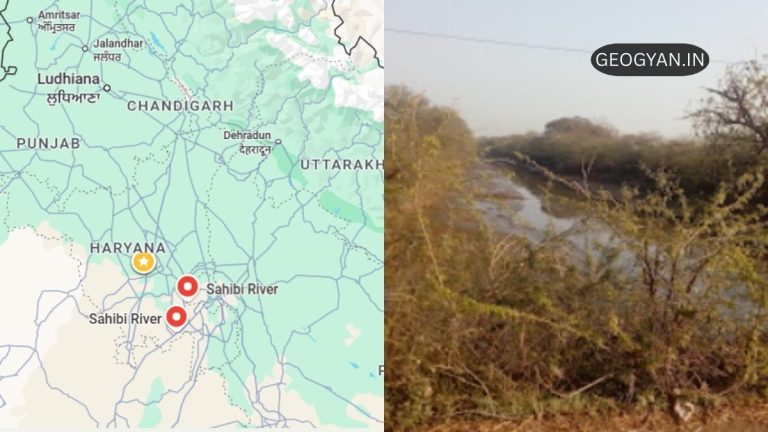Estimated reading time: 4 minutes

Table of contents
Why is Ranthambore National Park in the News?
Ranthambore National Park is in the news recently due to a series of tragic tiger attacks, including the death of a forest range officer during routine patrolling in May 2025, and the earlier attack on a young boy near the Trinetra Ganesh temple in April 2025. These incidents have drawn national attention to the rising incidents of human-tiger conflict within the park, prompting authorities to increase safety protocols, temporarily close certain routes, and intensify patrolling in sensitive areas.
These developments highlight the continuing challenges in managing the interface between wildlife conservation and human activity in one of India’s most famous tiger reserves.
Overview & Key Geographical Facts
| Feature | Detail |
| Location | Sawai Madhopur district, Rajasthan; at the junction of Aravalli & Vindhyan ranges |
| Total Area | 1,334 km² |
| Core Area | ~275 km² |
| Rivers | Bounded by Banas River (north) and Chambal River (south) |
| Sanctuaries Included | Kailadevi WLS & Sawai Man Singh Sanctuary |
| IUCN Category | Category II – National Park |
| Authority | Ministry of Environment, Forest & Climate Change; Project Tiger |
Ranthambore is globally recognized for its high tiger density and its photogenic landscape of lakes, ruins, and dry deciduous forests.
Historical Background — How Was Ranthambore Established?
- Originally declared Sawai Madhopur Game Sanctuary (1955)
- Became a Project Tiger Reserve (1973–74)
- Notified as a National Park (1980)
- Named after the 10th-century Ranthambore Fort (UNESCO World Heritage Site)
The region was once the royal hunting ground of Jaipur rulers.
Flora of Ranthambore — Dry Deciduous Biodiversity
Ranthambore lies close to the Thar desert, so its vegetation is primarily tropical dry deciduous.
Dominant Species
- Dhok (Anogeissus pendula) → 80% of forest cover
- Main food source for deer, antelopes, and Nilgai
Other Important Trees
- Banyan & Pipal – medicinal and cultural significance
- Neem – medicinal tree
- Chhila (Butea monosperma) – famous Flame of the Forest
- Tendu – leaves for bidis; fruits eaten by sloth bears
- Khair – source of katha used in paan
Wetland & Grass Species
- Khus grass, lotus, water lilies
- Lakes like Padam Talao enhance biodiversity
RNP has 300+ plant species, including 100 medicinal plants.
Fauna of Ranthambore — The Tiger Kingdom
Apex Predator
- Royal Bengal Tiger
Other Cats
- Leopard
- Caracal
- Fishing cat
- Jungle cat
- Leopard cat
Major Mammals
- Sloth bear
- Striped hyena
- Jackal
- Desert fox
- Indian wolf (rare)
Herbivores
- Chital (spotted deer)
- Sambar deer
- Nilgai (blue bull)
- Chinkara (Indian gazelle)
Reptiles
- Marsh crocodile
- Python
Bird Diversity
Around 300 bird species, including:
- Sarus crane
- Kingfisher
- Nightjar
- Painted sandgrouse
- Great horned owl
Ranthambore is one of India’s best birding destinations.
Conservation Status & Challenges
Tiger Population
- 2022: 69 tigers
- 2023–24 estimate: 75 tigers (including cubs)
Carrying Capacity Issue
- Sustainable population: ~40 adults
- Maximum capacity: ~50
- Current numbers: Above safe threshold → territorial fights, migration, deaths
Human-Wildlife Conflict (HWC)
Causes:
- Shrinking habitat
- Urban expansion
- Increasing tiger population
Recent incidents include fatal attacks near Sawai Madhopur.
Missing Tigers
- 25 out of 75 tigers went missing within a year
- As of Oct 2024, 11 tigers missing for 1+ year
This raises serious concerns about monitoring and habitat stress.
Significance of Ranthambore
Ranthambore is a critical Tiger Reserve, a biodiversity hotspot, and a heritage landscape combining wildlife conservation, geomorphology, and cultural history. Its challenges—especially HWC, missing tigers, and carrying capacity stress—reflect the broader issues facing Indian wildlife management.
FAQs
1. Why is Ranthambore famous?
Because it is one of India’s best parks for spotting wild tigers, set against lakes, ruins, and dramatic landscapes.
2. Which rivers surround Ranthambore National Park?
Banas River (north) and Chambal River (south).
3. What is the dominant tree species in RNP?
Dhok (Anogeissus pendula) covers nearly 80% of the park.
4. How many safari zones does Ranthambore have?
Ranthambore has 10 zones.
5. Why are tigers going missing?
Habitat pressure, migration, territorial fights, poaching risk, and monitoring gaps.
Sources: Ranthambore National Park
Also Read
- NCERT Geography Solution for Class 9: Natural Vegetation and Wildlife
- मोबाइल या टेलीविज़न पर चंद्रयान-3 की सॉफ्ट लैंडिंग को लाइव कैसे देखें? How to watch Chandrayaan-3 soft landing live on mobile or television?
- एच.जी. चैम्पियन के अनुसार भारतीय वनों का वर्गीकरण (Indian Forests Classification by H.G. Champion)
- Kaziranga National Park Breaks Records in Tiger Density & Wildlife Protection
- From Hailey to Jim Corbett: Story of the First National Park in India





























